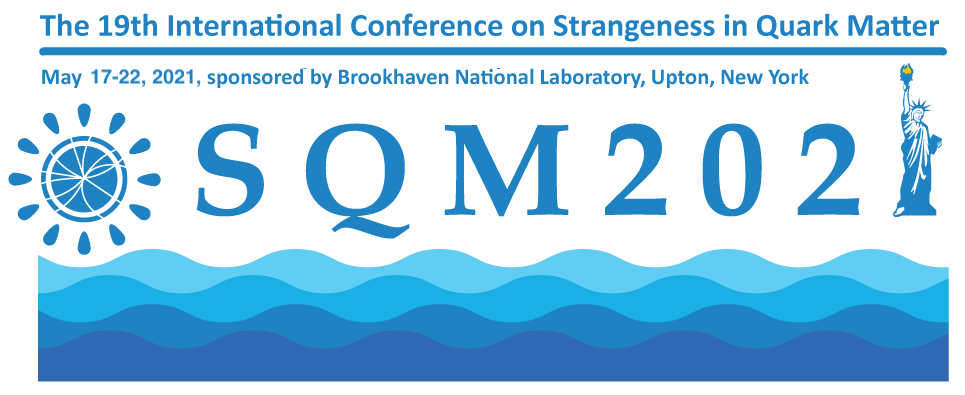Speaker
Description
The Λ binding energy difference, which is called the charge symmetry breaking in the ground states of a pair of A = 4 hypernuclei, $^{4}_{\Lambda}$H and $^{4}_{\Lambda}$He, was measured to be $\Delta B^{4}_{\Lambda}(0^{+}_{g.s.})$ ≈ 350 keV in nuclear emulsion experiments in 1970s. In the 2015 experiment from J-PARC, the binding energy difference in excited states $\Delta B^{4}_{\Lambda}(1^{+}_{exc})$ ≈ 30 keV was found to be much smaller than the ground states. In 2016, the A1 collaboration updated the values to $\Delta B^{4}_{\Lambda}(0^{+}_{g.s.})$ ≈ 233 keV and $\Delta B^{4}_{\Lambda}(1^{+}_{exc})$ ≈ −83 keV. These values are difficult to be reproduced in existing theoretical models. The full understanding of the charge symmetry breaking in A = 4 hypernuclei still remains an open question.
As part of the STAR fixed target program, the STAR detector took the data in Au+Au collisions at $\sqrt{s_{\rm{NN}}}$ = 3 GeV in 2018. The high production yield of hypernuclei provides an opportunity to measure the binding energies of both A = 4 hypernuclei in ground states in the same experiment to address this charge symmetry breaking puzzle. In this talk, we will present the measurement of the charge symmetry breaking in A = 4 hypernuclei in Au+Au collisions at $\sqrt{s_{\rm{NN}}}$ = 3 GeV. The signal reconstruction and binding energy measurement of $^{4}_{\Lambda}$H and $^{4}_{\Lambda}$He, including energy loss correction and systematic uncertainty evaluation, will be discussed. Our preliminary result for ground states is smaller than the old results. Combined with the energy levels of excited states, our preliminary result for excited states shows a negative value and is compareable to the value of ground states. These results will be compared to previous measurements and theoretical models.
| Collaboration | STAR Collaboration |
|---|
